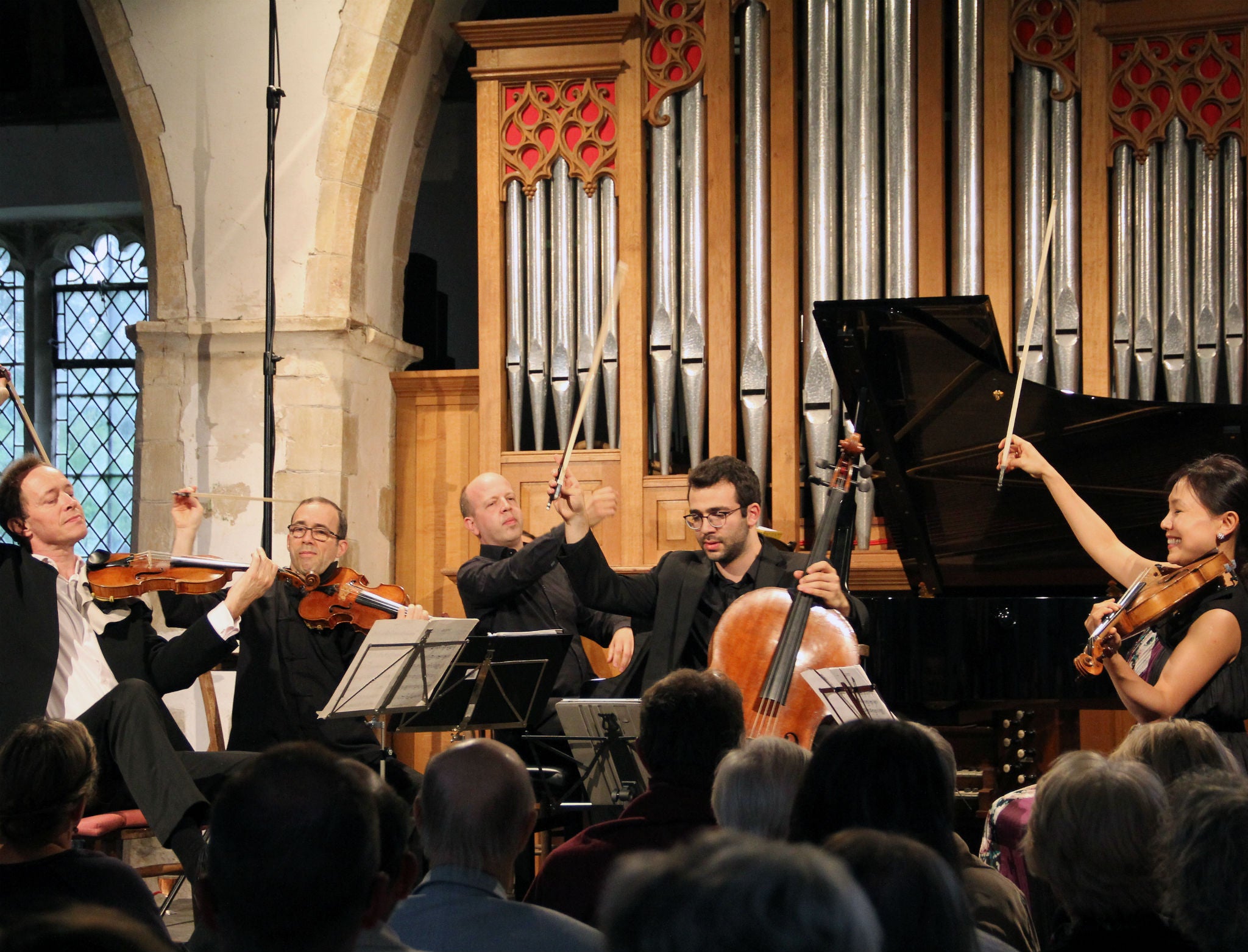Peasmarsh Chamber Music Festival, Church of St Peter and St Paul, Peasmarsh, review: You couldn’t imagine a more intimate setting
Led by violinist Anthony Marwood, this festival in rural Sussex has become an important fixture, with world-class instrumentalists delivering repertoire with a left-field slant

Your support helps us to tell the story
From reproductive rights to climate change to Big Tech, The Independent is on the ground when the story is developing. Whether it's investigating the financials of Elon Musk's pro-Trump PAC or producing our latest documentary, 'The A Word', which shines a light on the American women fighting for reproductive rights, we know how important it is to parse out the facts from the messaging.
At such a critical moment in US history, we need reporters on the ground. Your donation allows us to keep sending journalists to speak to both sides of the story.
The Independent is trusted by Americans across the entire political spectrum. And unlike many other quality news outlets, we choose not to lock Americans out of our reporting and analysis with paywalls. We believe quality journalism should be available to everyone, paid for by those who can afford it.
Your support makes all the difference.The Norman church has rugged charm, and it’s just 90ft long; over the past thousand years, those who worshipped there have left only the lightest of marks, the most notable being a stone above the chancel bearing an Elizabethan inscription of the Creed and Commandments. The north aisle is filled with a pipe-organ, in front of which is a semi-circular dais ringed by chairs: you couldn’t imagine a more intimate setting for chamber music, with nobody further than 30ft from the players.
Led by violinist Anthony Marwood, this festival in rural Sussex has become an important fixture over the last 20 years, with world-class instrumentalists delivering repertoire with a left-field slant. But the first of two concerts I attended began with mainstream assurance – Beethoven’s String Trio in C minor Opus 9 no 3.
With Marwood on violin, Hsin-Yun Huang on viola, and Richard Lester on cello, this work from the composer’s virtuoso period got a blisteringly powerful rendering. They brought out the tensile strength of the Allegro’s framework, and the combative muscularity of the Scherzo; the Adagio had spacious grandeur.
The Hindemith piece which followed – the Violin Sonata in E flat Opus 11 – saw that composer in unusually melodious mood, thanks to violinist Mark Steinberg and pianist Huw Watkins.
Elgar’s Quintet in A minor for Piano and Strings, which concluded the programme, appeared in burnished autumnal raiment, as befitted its position as the last of his wartime masterpieces.
But the late-evening concert was brilliant both in concept and execution. Purcell’s Fantasias are majestically beautiful, formal perfection disguising their intricate harmonic and contrapuntal tricks. By interlarding them with Sciarrino’s Sei Capricci, Marwood and four string colleagues enhanced the Fantasias’ beauty while allowing the Italian composer’s extraordinary little pieces to emerge in a way they never would in a conventional concert presentation.
That was partly because they consist entirely of harmonics only audible either with amplification or right up close, as at Peasmarsh. And partly because these fleetingly evanescent pieces demand listening of a particularly intense kind, which the Fantasias foster.
It was interesting to hear the latter works on modern instruments, rather than with the bleached sound of the viols for which they were written, but the dissonances remained as voluptuous as ever. Meanwhile it was fascinating to enter Sciarrone’s secret little sound-world, the musical equivalent of a dolls’ house.
To close this enchanting sequence, Marwood – who had been playing the Sciarrone from a distance – rejoined his companions for Purcell’s Fantasia Upon One Note, in which the viola stayed on a monotone while the other instruments wove contrapuntal arabesques around it, finally coming together in the sweet pain of a slow harmonic resolution.
It’s worth noting that the Peasmarsh Festival is active in East Sussex schools, drawing in fledgling composers and cultivating teenage audiences, and also that Marwood and his colleagues will be giving a concert at the Wigmore Hall on 25 November, to celebrate their festival’s twentieth anniversary.
Join our commenting forum
Join thought-provoking conversations, follow other Independent readers and see their replies
Comments